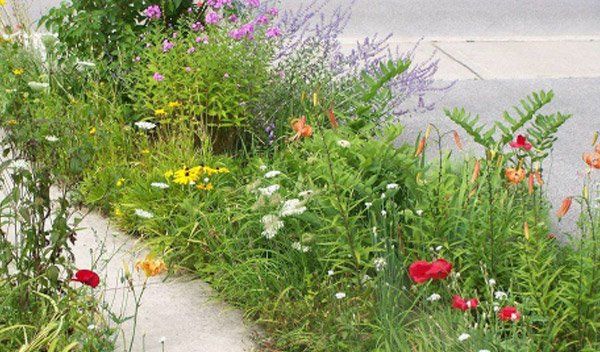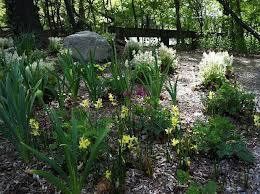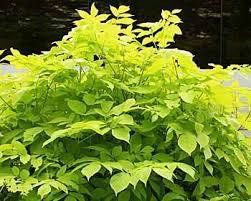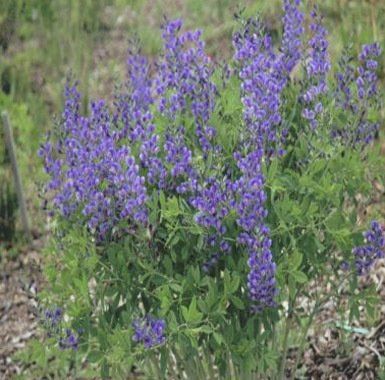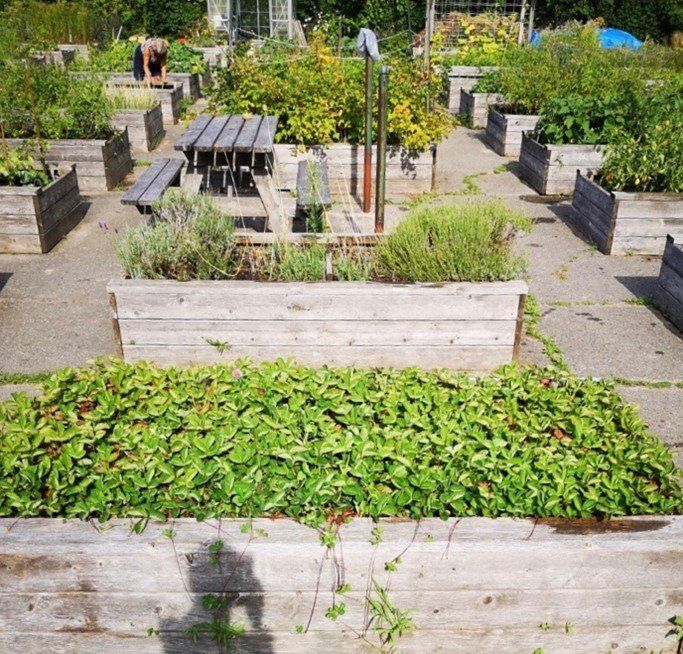Perennials For Difficult Locations
Every Garden has them - those spots where perennials go to die. If you’re on the verge of giving up gardening you’ll be relieved to learn that there are perennials that actually prefer shady locations, dry areas and those wet spots in your garden. There are even some that tolerate the dreaded dry shade, the nemesis of many a perennial.
In the Dark: Here are a few tips and tricks that will help you and your plants cope with those areas of the garden where the sun never seems to shine:
- Look before you leap to conclusions. Observe the shady areas of your garden at all times of the day and during different seasons. You may be surprised at how much light there is.
- Maximize the light available by keeping trees and shrubs pruned.
- Plants with variegated foliage give the illusion that sun is touching their leaves, and plants with yellow/green leaves light up a flower bed, even in the shade.
- Don’t be tempted by overly aggressive plants. There are many well-behaved perennials that prefer part or full shade. Let’s take a look at some of them.
If your shade is caused by deciduous trees, don’t forget spring flowering bulbs. There will be enough light before the trees leaf out for snowdrops, crocus, and other early small bulbs to flower. Hyacinths, daffodils and early tulips will also put on quite a show.
Early flowering native wildflowers are also a good choice. Walk through the woods in the spring and take pictures of plants in bloom, then visit a good nursery that specializes in native plants and go to town.
-
Pulmonaria
Photo By: John DoeButton -
Bleeding Heart
Button(Lamprocaprios spectabilis)
-
Brunnera Macrophylla
Photo By: John DoeButton
Pulmonaria is an early bloomer that thrives in part to full shade. It is the first perennial to flower, and its pink and blue flowers set off the yellow and white of narcissus.
Another early boomer that loves the shade is old fashioned bleeding heart (Lamprocaprios spectabilis, previously Dicentra spectabilis). With either pink or white flowers this perennial has presence, growing up to 3ft. high and wide. Unfortunately bleeding heart dies back in the summer, so don’t forget where it is. A relative, fringed bleeding heart, (Dicentra eximia) continues to flower through the summer and, while it lacks the star power of the common bleeding heart it is lovely in a woodland setting.
Brunnera is another shade loving spring bloomer. It’s often called the perennial forget-me-not because of its intense blue flowers. Choose a variety that has silver splashed foliage and it will
continue to provide interest after the flowers are gone.
-
Hostas
Photo By: John DoeButton -
Heuchera 'Red Lightning'
Photo By: John DoeButton -
Toad Lily
Button(Trysirtis Hirta)
What would we do without hostas? Reliably hardy and long-lived, hostas will light up the shady spots in your garden for many years. There are literally thousands of varieties available, ranging from the miniature “Blue Mouse Ears” of 4-6 inches in height, with a spread of 8-12 inches, to the majestic “Empress Wu”, which can reach 4 ft. in height and 4-5 ft. in width. The only problem with hostas is trying to limit yourself to just a few.
Heucheras are another reliable choice for the shade garden. Their colourful foliage puts on a show throughout the gardening season.
The Toad Lily (Tricyrtis hirta) starts flowering in late summer and continues through the fall. It adds interest to the garden just at the time when it can start to look drab.
-
Japanese Forest Grass
Button(Hakonechola macra 'Aureola')
-
Northern Sea Oats
Button(Chasmanthium lactifolia)
-
Carex 'Everest'
Photo By: John DoeButton
Although most ornamental grasses prefer sun, Japanese Forest Grass (Hakonechloa macra) performs well in shade. For a bit more height, try Northern Sea Oats (Chasmanthium lactifolia). This grass is tolerant of any light conditions, full sun to full shade. Sedges prefer shade, and the variegated leaves of Carex ‘Everest’ shine in the dark, making it a star in the garden at night as well as during the day.
If you would like something unique for your garden, give Japanese Spikenard (Aralia cordata ‘Sun King’) a try. When it is established, it can reach 3 ft. high and the same in width. The Japanese Spikenard produces white frothy flowers on spikes in the late summer, and its cinnamon coloured stems contrast with the chartreuse leaves.
-
Russian Sage
Button(Perovskia atriplicifolia)
-
Yarrow Moonshine
Button(Achillae millefolium 'Moonshine')
-
Liatris Spicata
Button'kolbold'
High and Dry: Is your garden in full sun for most of the day? Is your soil light and doesn’t hold moisture? In addition to choosing the right plants for these conditions, there are a few other things that will help:
- Add compost to help your soil retain moisture.
- Give your plants plenty of space to reduce competition for available moisture.
- Help drought tolerant plants become established by watering regularly for the first year.
- Mulch deeply to retain moisture and reduce weeds.
Drought tolerant plants have identifiable characteristics. Perennials with grey foliage, small leaves or foliage with a fuzzy texture lose less moisture through evaporation. Russian Sage (Perovskia atriplicifolia), Yarrow (Achillae millefolium), and Liatris (Liatris spicata) all share this characteristic. Other examples are Lavender (Lavendule angustifolia), Catmint (Nepeta), and Threadleaf Coreopsis (Coreopsis verticillata).
Some plants store moisture in their leaves, and can be identified by their characteristically thick, fleshy leaves. Sedums are probably the most readily identifiable of this group. There are a vast number of sedums available, from the large varieties such as “Autumn Joy” and “Matrona” (pictured at the left), that grow to 2 ft. tall and wide, to varieties such as “Vera Jameson” that only reach 6-8 inches and are good for edging beds. There are sedums such as ‘Frosty Morn’ with variegated leaves, and a number with deep burgundy foliage. Most sedums flower in late summer through fall.
Just as sedums and other similar perennials store water in their leaves, some perennials store moisture in their roots, and can be identified by their thick fleshy root systems. Peonies and Day Lilies (Hemerocallis) are good examples of this group. Both peonies and daylilies have the ability to survive adverse conditions because of the moisture and food stored in their root systems, and can often be seen in abandoned farm gardens, still flowering.
Perennials with long tap roots can access moisture deep in the soil during times of drought.
Blue False Indigo (Baptisia australis) is an example of perennials with this characteristic. If you’ve ever tried to move one of these, you know how deep its roots go! Be careful with the placement of this perennial, as it is a big one, reaching up to 4 ft. high and 3 ft. wide.
-
Variegated Maiden Grass
Button(Miscanthus sinensis 'Varigatus')
-
Blue Oat Grass
Button(Helictotrichon sempervirons)
-
Switchgrass
Button(Panicum virgatum)
And don’t forget ornamental grasses! Many grasses prefer full sun and well drained soil and, once established, will tolerate dry conditions. If you’d like to make a statement in the garden, try Variegated Maiden Grass (Miscanthus sinensis ‘Variegatus’), or one of the other Miscanthus cultivars such as ‘Zebrinus’ or ‘Morning Light’. Switchgrass (Panicum virgatum) is a useful grass that adapts well to a range of conditions. Like Miscanthus, it is a large plant that will reach 4 to 5 feet in height. Blue Oat Grass (Helictotrichon sempervirens) is a smaller plant of about 2 feet. Its steel blue colour combines with a variety of perennials and shrubs.
-
Spring Beauty
Button(Claytonia virginica)
-
Adder's Tongue
Button(Erythronium americanum)
-
Japanese Primrose
Button(Primula japonica)
Water Water Everywhere: Is your garden located at a low point of your property? Do you have heavy, clay soil? If so, you probably have a garden that is wet in the spring and at least moist during the rest of the year. Improve the drainage of your soil by digging in lots of compost. If the problem is due to the terrain and is severe, you may need to consider having the property regraded; however, choosing moisture loving plants can turn your wet site into a beautiful garden.
The larger spring flowering bulbs are not a good option for wet areas, but early blooming native wildflowers such as Spring Beauty (Claytonia virginica) and Adder’s Tongue (Erythronium americanum) will provide early spring colour.
Japanese Primrose (Primula japonica) is a good choice for the wet spring garden. It prefers a fairly shady spot but is fine with partial shade when it has consistent moisture. As noted above, Brunnera macrophylla is normally a shade lover, but it is also happy in partial shade and even full sun when it is planted in wet soil.
Siberian Iris (Iris siberica) will continue the show of flowers into early summer. They enjoy partial to full sun and the damp conditions you
can offer. If you think of Siberian Iris as being purple or blue, you’re in for a nice surprise, as there are a number of other colours available, including white, yellow and various shades of pink.
-
Gooseneck Loosestrife
Button(Lysimachia clethroides)
-
Cardinal Flower
Button(Lobelia cardinalis)
-
Great Blue Lobelia
Button(Lobelia syphilitica)
-
Ligularia 'The Rocket'
Button -
Turtlehead
Button(Chelone)
There are a number of moisture loving perennials that bloom from midsummer to fall. Among these: - Gooseneck Loosestrife (Lysimachia clethroides) which gets its common name because of its gracefully arching wands of flowers that are said to look like a flock of geese. Cardinal Flower (Lobelia cardinalis) is a native plant whose bright red blooms attract hummingbirds. It looks great planted next to its relative, Great Blue Lobelia (Lobelia syphilitica). The above perennials are all accepting of full sun to partial shade, as is another summer – fall bloomer, Ligularia. Some cultivars of Ligularia can grow to over 5 ft. In height, so place it carefully.
Turtlehead (Chelone) has pink flat blooms that resemble the head of a turtle. It flowers in late summer through fall, to bring your wet garden to a close for the year.
The Dreaded Dry Shade! The last of the difficult locations is the most inhospitable. Dry shade is under overhangs or thick conifers. It can also be caused by heavily canopied deciduous trees, especially those with wide ranging root systems that sap moisture and nutrients. Plants will not really thrive in these conditions, but some will tolerate the lack of light and moisture.
In addition to choosing the perennials that will grow in these conditions, try these tips to give your plants the best chance possible.
- Amend the soil with compost, and use compost as mulch.
- Small plants are easier to get established.
- To minimize competition for moisture and nutrients, give each plant sufficient space and keep weeds under control.
- Water until the plants are well established.
-
Barrenwort
Button(Epimedium x rubra)
-
Spotted Deadnettle
Button(Lamium maculatum 'Pink Pewter')
-
Big Root Geranium
Button(Geranium macrorrhyzum)
-
Heart-Leaved Bergenia
Button(Bergenia cordifolia)
-
Fish-Scale Sedum
Button(Sedum tetractinum)
Spotted Deadnettle (Lamium maculatum) is a strong grower that is considered aggressive in better conditions, but it performs well in dry shade. It has variegated green and white foliage that shines in the shade and produces white, pink, or purple flowers, mainly in the spring & early summer, but it continues to bloom less prolifically for the rest of season. A low grower, it is useful as a groundcover.
Barrenwort (Epimedium) is another good groundcover for dry shade. It grows 8 inches – 1 ft. tall and blooms in the spring. Flower colours vary depending on the variety.
Big Root Geranium (Geranium macrorrhizum) is tolerant of most conditions. It spreads through tough underground rhizomes and produces magenta flowers in spring and early summer.
Another perennial to try in this most difficult location is Heart-Leaved Bergenia (Bergenia cordifolia). It is a very hardy, forgiving plant, tolerant of less than perfect light conditions, soil and moisture. It grows 12-18 inches in height and has dark pink flowers in the spring. As an added bonus its leaves turn bronze in the fall.
Do you get some light in your dry shade location? If so, Fish-Scale Sedum (Sedum tetractinum) is worth a try. It is fine in part shade and, like all sedums it is extremely drought tolerant. Fish-Scale Sedum is one of the low growing groundcover sedums. It is covered with bright yellow star shaped flowers in the summer and, like Bergenia, its leaves turn bronze in the fall.
Choosing the right plants for the right location is key to having a garden you can be proud of, even if it has more than its fair share of difficult areas. Be patient, don’t be afraid to experiment and, above all, don’t give up!
If you would like a more comprehensive list of perennials to plant in difficult locations, please email us at mggreycounty@gmail.com
Prepared by Grey County Master Gardeners for use by home gardeners and community groups.
For other use please email mggreycounty@gmail.com Mar. 2018 JC
Latest Blog Posts
